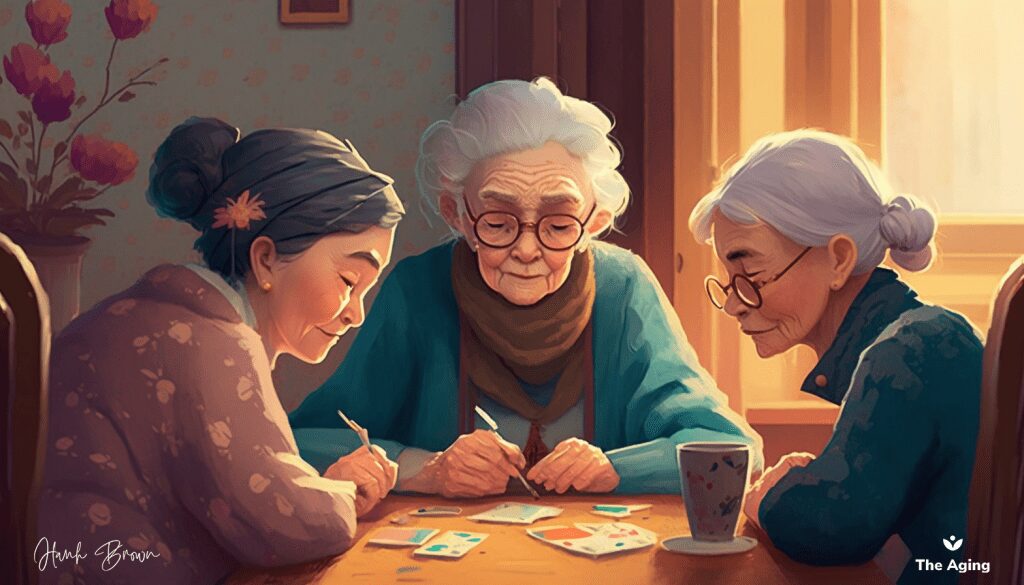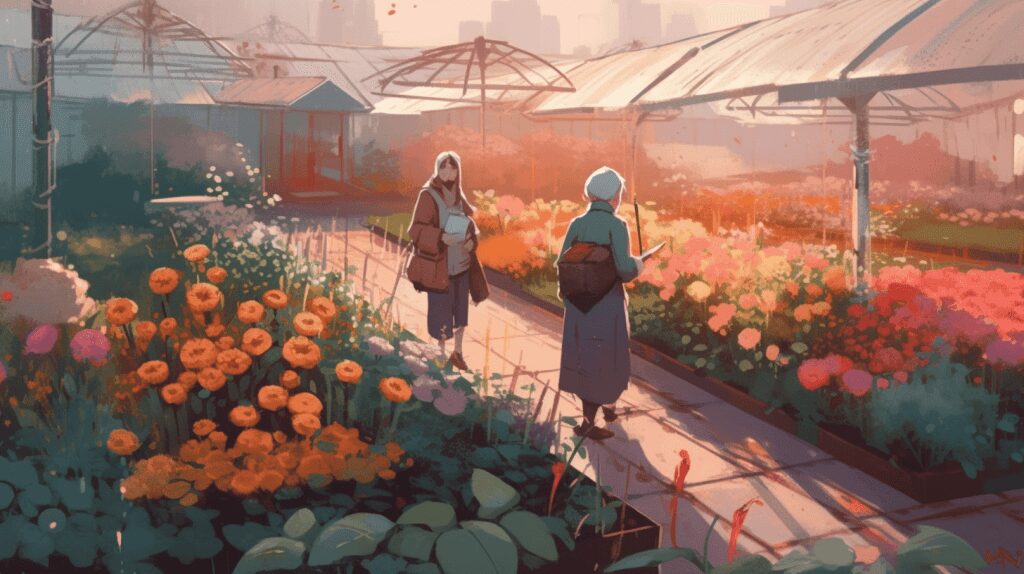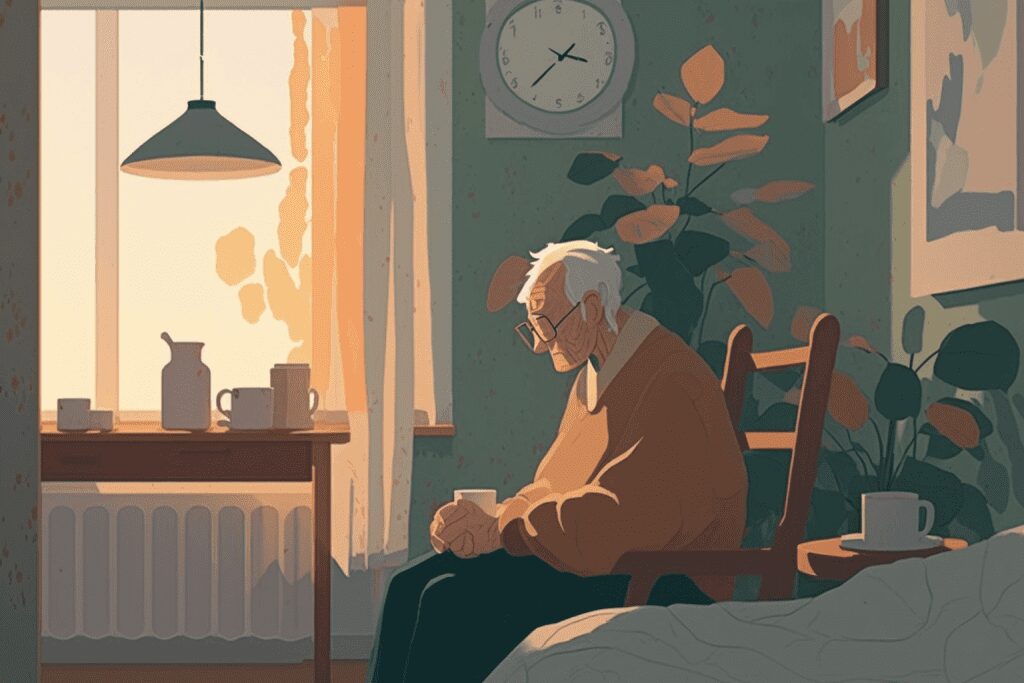Are you seeking the secrets to aging gracefully and living a vibrant, fulfilling life? Discover the power of lifelong learning and its impact on our journey through the years in this comprehensive article.
Unveiling the latest research on diet, exercise, sleep, stress management, skincare, and medical interventions, we provide you with an all-encompassing guide to creating a masterpiece of health and longevity.
From debunking common myths to exploring cutting-edge of anti-aging research, this article will empower you with the knowledge and strategies you need to take control of your aging process.
Don’t let time slip away, dive in and unlock the fountain of youth within you today!
What is Aging? A Journey Through Time and Biology
Imagine embarking on a voyage on a ship called “Life.” Aging is that journey, with each passing year marking a new milestone in our adventure. But what truly lies behind this mysterious, inexorable process? What determines whether we age like fine wine or wilt like wilting flowers?
Aging is a complex interplay of factors that impact our body over time, leading to physical, mental, and emotional changes. In simple terms, it’s the gradual ticking of the clock that results in the decline of our biological functions. But have you ever wondered why some individuals seem to defy time while others appear to succumb to it all too soon? This is where the distinction between chronological age and biological age comes into play.

Chronological age source to the number of years we’ve spent on this earth since our birth, while biological age reflects the true state of our body, influenced by our genes, lifestyle choices, and environment. So, are we merely victims of time or can we steer the ship of our aging journey? Let’s delve deeper into the causes of aging to understand the forces at play.
Tapestry of Aging: A Symphony of Causes
Picture aging as a grand symphony, with every instrument representing a factor that contributes to the process. This symphony is a blend of genetic, environmental, and lifestyle factors, all working together in harmony, or perhaps, in discord.
Genetic Maestro: The Invisible Hand Behind Aging
Genes are like the conductor of the aging orchestra, orchestrating our body’s response to the passage of time. Within our DNA lies a blueprint that governs the tempo of our biological clock. One of the key players in this genetic symphony is telomere shortening.
Think of telomeres as the protective caps at the ends of our chromosomes, like the aglets on shoelaces. Over time, as our cells divide and replicate, these telomeres become shorter and eventually reach a critical length, causing cellular senescence, or the cessation of cell division. This is akin to the unraveling of our shoelaces, leaving our DNA vulnerable to damage and dysfunction.
Another genetic factor is DNA damage itself. Imagine our DNA as a complex, winding road that we travel throughout our lives. Over time, cracks and potholes form, disrupting the smooth journey of our biological functions. Accumulated DNA damage can lead to a myriad of age-related diseases and conditions.
Environmental Saboteurs: The Unseen Adversaries in the Aging Process
Our environment is like a stealthy saboteur, lurking in the shadows and subtly influencing our aging process. From the scorching sun to the polluted air we breathe, our surroundings play a significant role in determining the pace of our aging journey.
Take UV radiation, for example. Just like Icarus flying too close to the sun, excessive exposure to sunlight can lead to premature aging by damaging our skin’s collagen and elastin fibers, resulting in wrinkles and age spots. Similarly, pollution can act as an invisible thief, stealing our youth by introducing harmful chemicals and free radicals into our body, which accelerate cellular damage and aging.
Lifestyle Symphony: The Notes We Choose to Play
Lifestyle factors are the instruments we choose to play in our aging symphony, and their harmony or dissonance depends on our choices. Whether it’s the food we consume, the exercise routines we follow, the quality of our sleep, or the way we manage stress, each decision contributes to the overall melody of our aging process.
Anti-Aging Facts: Separating the Wheat from the Chaff
With each passing day, we’re bombarded with tantalizing promises of age-defying potions, miracle treatments, and the modern-day equivalent of the Fountain of Youth. But are these claims rooted in reality or merely wishful thinking? Let’s embark on a journey to debunk some common myths and misconceptions about aging and anti-aging treatments, as we separate fact from fiction.

Myth 1: There is a miracle cure for aging
Picture a magic elixir that promises eternal youth – sounds too good to be true, doesn’t it? That’s because it is. While science has made great or even biggest strides in understanding the aging process, there is no one-size-fits-all solution to halt or reverse it completely. The truth is, aging is a multifaceted process, influenced by our genes, environment, and lifestyle choices. Instead of seeking a mythical miracle cure, focus on adopting a holistic approach to aging that incorporates a healthy diet, regular exercise, stress management, and proper skincare.
Myth 2: You can turn back the clock completely
Like sand slipping through the hourglass, the passage of time is inevitable. While we can certainly slow down the aging process, it’s essential to manage our expectations and accept that we cannot turn back the clock entirely. Science has yet to discover a way to reverse all the effects of aging, and while some treatments can improve the appearance of our skin or help us feel more youthful, they cannot transport us back to our teenage years.
Science Behind Anti-Aging: Unraveling the Threads of Time
Our quest for eternal youth might not have uncovered a magical elixir, but it has led to remarkable discoveries in the realm of anti-aging science. By understanding the biological processes that underpin aging, we can better equip ourselves to age gracefully and maintain our health and vitality.
Telomeres: The Biological Hourglass
As mentioned earlier, telomeres are like the protective caps at the ends of our chromosomes that gradually shorten as our cells divide. When telomeres reach a critical length, our cells become senescent, leading to age-related decline. However, scientific research has shown that this process can be slowed down through lifestyle interventions like healthy diets, regular exercise, and stress management. In essence, we can influence the sands of our biological hourglass by making conscious choices to support our overall health.
Hormonal Changes: A Delicate Balancing Act
Our hormones play a pivotal role in the aging process, with growth hormone and testosterone being two key players. As we age, our bodies produce less of these hormones, leading to decreased muscle mass, bone density, and energy levels. While hormone replacement therapy may be an option for some, it’s crucial to approach this treatment with caution and under the guidance of a healthcare professional. Remember, our bodies are like a finely tuned orchestra, and maintaining hormonal balance is essential to our well-being.
Free Radicals and Antioxidants: A Battle of Good vs. Evil
Free radicals are like the villains in the story of aging, wreaking havoc on our cells and contributing to the decline of our biological functions. Antioxidants, on the other hand, are the heroes, neutralizing these nefarious molecules and protecting our cells from damage. Consuming a diet rich in antioxidants, such as fruits, vegetables, and whole grains, can help combat the harmful effects of free radicals and support the aging process.
Epigenetics and Aging: A Symphony of Gene Expression
Epigenetics is the fascinating study of how changes in gene expression, rather than alterations in the DNA sequence itself, can affect our health and the aging process. Imagine our genes as an orchestra, with each musician playing a specific part. Epigenetics acts as the conductor, guiding the performance and influencing the overall harmony.
Lifestyle factors like diet, exercise, and stress can impact our epigenetic profile, which in turn, affects the way our genes are expressed. For example, research has shown that engaging in regular physical activity can lead to positive epigenetic changes, promoting healthy aging and reducing the risk of age-related diseases.
By understanding the role of epigenetics in aging, we can begin to appreciate the power we hold in our hands to influence our genetic destiny. Rather than being passive passengers on the aging journey, we can actively shape our path by making informed choices that promote longevity and overall health.
Diet and Anti-Aging: A Symphony of Nutrients

In the grand orchestra of anti-aging strategies, a nutrient-rich diet plays a starring role. The foods we consume can be likened to individual instruments, each with its unique tone and timbre, working together to create a symphony of health and vitality.
Omega-3 fatty acids that are mostly found in fatty fish and nuts can help reduce inflammation and support brain health, while fiber from whole grains and legumes keeps our digestive system humming in tune. Polyphenols, found in foods like dark chocolate and green tea, serenade our cells with their antioxidant and anti-inflammatory properties. When these nutrient powerhouses join forces, they create a harmonious ensemble that keeps the melody of youth playing on.
Exercise and Anti-Aging: The Dance of Vitality
If diet is the symphony of our anti-aging strategies, exercise is the dance that brings it to life. Physical activity is the graceful choreography that weaves together the various aspects of our well-being, helping us maintain balance, strength, and flexibility in the face of time’s relentless march.
Aerobic exercises, like swimming and brisk walking, keep our cardiovascular system performing at its peak, while mind-body practices such as tai chi and Pilates enhance our cognitive function and emotional well-being. By embracing a diverse repertoire of exercise modalities, we can keep our bodies in motion and age with grace and vitality.
Sleep and Anti-Aging: The Healing Lullaby
In the theater of life, sleep is the intermission that allows our bodies to rest, repair, and rejuvenate. Just as a captivating play needs a well-timed interlude, our bodies require the restorative power of sleep to maintain our youthful vigor and resilience.
During the deepest stages of sleep, growth hormone, often called the “youth hormone,” orchestrates a symphony of cellular repair and regeneration, fortifying our bodies against the ravages of time. To ensure our performance on the stage of life remains vibrant and compelling, we must honor the importance of sleep as a key player in our anti-aging strategies.
Stress Management and Anti-Aging: The Calm Amidst the Storm

Life’s storms can test our resilience and, if left unchecked, accelerate the aging process. To weather these tempests, we must develop effective stress management techniques that help us maintain a sense of calm and balance.
Practices such as mindfulness and journaling offer a sanctuary from the turmoil, allowing us to reconnect with our inner wisdom and regain our composure. As we cultivate these skills, we can emerge from life’s storms with renewed strength and vitality, ensuring our anti-aging efforts remain steadfast and effective.
Skin Care and Anti-Aging: The Armor of Youth
Our skin is the shield that protects us from the elements, and preserving its integrity is vital to our anti-aging quest. Beyond shielding our skin from UV damage and using topical treatments, a consistent skincare routine that includes gentle cleansing, exfoliation, and moisturizing can help maintain our skin’s natural barrier function and elasticity.
Nourishing our skin from within, by consuming hydrating foods and supplements like hyaluronic acid and collagen, can also contribute to a radiant and youthful appearance. By treating our skin with care and reverence, we can ensure our anti-aging armor remains strong and resilient.
Medical Interventions for Anti-Aging: The Cutting Edge
In the ever-evolving landscape of medical interventions, cutting-edge treatments and therapies offer new hope for those seeking to combat age-related decline. Breakthroughs like stem cell therapy, gene editing, and personalized medicine are opening doors to previously unimagined possibilities in the realm of anti-aging.
As we venture into this quality new world, it is crucial to approach these interventions with caution and under the guidance of a healthcare professional, as they may carry risks and side effects. Informed decision-making and a balanced perspective are essential in navigating the frontier of medical interventions, ensuring that our quest for youth and vitality remains grounded in science and wisdom.
Future of Anti-Aging Research: A New Dawn on the Horizon
As we look towards the future of anti-aging research, it is clear that we are on the cusp of a new dawn in our understanding of aging and age-related diseases. With the advent of emerging technologies such as gene editing and stem cell therapy, we have the potential to revolutionize our approach to aging and unlock new strategies for promoting longevity and good health. The current research on anti-aging treatments and interventions, including senolytics and telomerase activation, is paving the way towards a transformative shift in how we approach aging.
At the heart of this new age of scientific discovery and innovation is a growing recognition of the importance of understanding the complex biological mechanisms that underlie the aging process. By unraveling these mysteries, we can identify new targets for intervention and develop more effective treatments for age-related diseases.
As we continue to push the boundaries of what is possible in the field of anti-aging research, the future shines brightly, inspiring us to explore the uncharted territories of our potential. With each new breakthrough, we move one step closer to a world where aging is no longer a barrier to living a full and satisfying life.
Conclusion
It is important to acknowledge that aging is a natural and inevitable process, but it doesn’t mean that we cannot take steps to age gracefully and maintain our health and vitality. Lifelong learning is an essential tool that can help us achieve this goal. By adopting a nutrient-rich diet, engaging in regular exercise, getting enough sleep, managing stress, and considering medical interventions, we can create a vibrant and healthy life.
The scientific research on aging and longevity is constantly evolving, and we have access to a wealth of information that can help us make informed decisions about our health and well-being. It is important to take advantage of these resources and to stay informed about new developments in the field.
By adopting a proactive and informed approach to aging, we can create a fulfilling and youthful life. So, don’t miss out on the valuable insights and wisdom that science and experience offer – dive in and start your journey towards a healthier and happier you!
FAQs
What are the main factors that contribute to aging?
Aging is influenced by a combination of genetic, environmental, and lifestyle factors. Some genetic factors include telomere shortening and DNA damage, while environmental factors may involve exposure to UV radiation and pollution. Lifestyle factors, your livings, such as diet, exercise, sleep, and stress, also play a significant role in the aging process.
Can anti-aging treatments reverse the aging process completely?
While anti-aging treatments and interventions can help slow down the aging process and improve overall health, they cannot completely reverse it. The goal is to age gracefully and maintain vitality as we grow older.
What types of exercise are most effective for anti-aging?
Strength training and high-intensity interval training (HIIT) are two types of exercise that have been shown to be particularly effective in combating age-related decline. These exercises help improve muscle mass, cardiovascular health, and cognitive function.
How does sleep affect aging?
Sleep is crucial for overall health and the aging process. During sleep, our bodies repair, regenerate, and restore themselves. In addition, sleep deprivation can accelerate the aging process and negatively impact cognitive function, metabolism, and emotional well-being.
What are some stress management techniques that can help with anti-aging?
Effective stress management techniques for anti-aging include meditation, yoga, deep breathing, and other relaxation practices. These methods can help reduce the impact of chronic stress on the body and contribute to a healthier, more vibrant life.
How can I protect my skin from the signs of aging?
To protect your skin from the signs of aging, shield it from UV damage, maintain a consistent skincare routine, and consider using topical treatments like retinoids and vitamin C. Additionally, consuming hydrating foods and supplements like hyaluronic acid and collagen can help support skin health.
References
- https://www.nia.nih.gov/
- https://news.northwestern.edu/
- https://www.science.org/
